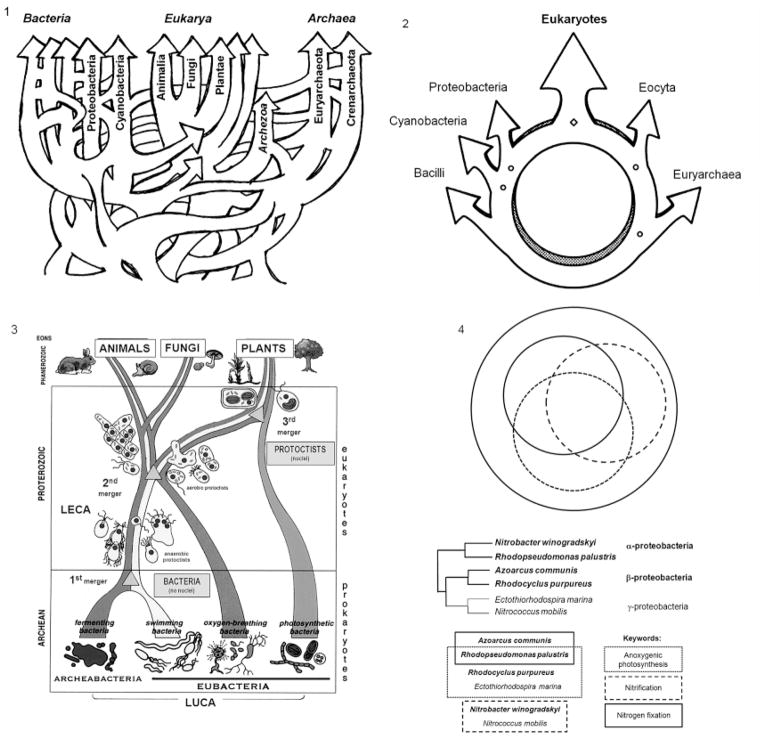Fig. 1–4.
Significant depictions of life’s evolutionary history. 1. “Reticulated tree” or net representing frequent lateral transfer of genetic material among the ancestors of bacteria, Eukarya, and Archaea (after Doolittle 1999; with permission from Science Magazine). 2. The “ring of life” connects all unicellular life by horizontal gene transfer and depicts major ancestral groups by tiny circles on the ring (Rivera and Lake 2004); bacteria (three left arrows) generate an “operational eukaryotic ancestor,” while archaea (two right arrows) generate an “informational eukaryotic ancestor,” both merge at the root of the eukaryotes (with permission from Nature Publishing Group). 3. The “symbiogenetic whole-organism reconstruction” of the evolution of early life (Margulis 2009; illustration modified from original drawing by K. Delisle) depicts life emerging from a last universal common ancestor (LUCA), the origin of eukaryotes after a series of symbiotic fusions of ancestral archaebacteria and eubacteria, which led to the emergence of the last eukaryotic common ancestor (LECA); three significant genome “anastomoses” are represented by the merging of archaebacteria and a “swimming” bacteria, eukaryotes and “oxygen-breathing” bacteria, and eukaryotes and “photosynthetic” bacteria; the ulterior origin of animals, fungi, and plants is also depicted (with permission from Springer Science and Business Media). 4. The “pattern pluralism scheme” (Bapteste and Boucher 2009; Doolittle and Bapteste 2007) is depicted as three overlapping circles, within a larger circle, representing “family resemblance” among taxa, a well-known concept among taxonomists; the tree in the middle shows a classic phylogeny, where six taxa belong to three identifiable groups (α-, β-, and γ-proteobacteria); the “interactive data base” (bottom) is structured by keywords that highlight overlapping features of the six taxa, which can appear grouped in different taxonomic units because they share common properties in specific dimensions, i.e. anoxygenic photosynthesis, nitrification, nitrogen fixation (with permission from Springer Science and Business Media).

